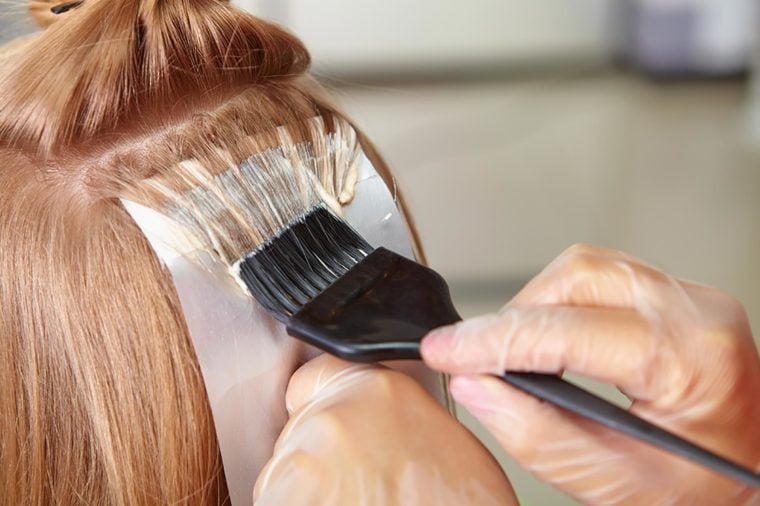![[feature]](https://blogger.googleusercontent.com/img/b/R29vZ2xl/AVvXsEjRAy6NDPBmb5HS9_CBACzb8k62HYSilMPahIbR6VMiuzRoIQSFCM25fR02nYbVNTiI_eA4C46nJCuDSIBfg1Itrk2goyQCgmNAB3axJiDIqOlV8VZWyFtz6Did-s1LhO-i86a-dNEjyIA/s1600/high-cholesterol-vitamin-d-relationship_thumb.jpg)
Top dermatologists gathered at the Women's Dermatologic Society Media Day recently to discuss breakthroughs in the skin care industry. Here, the eight things that shocked the heck out of us—and how these innovations could boost your complexion.
There’s a supplement that prevents sun damage
Fern is now your BFF (or at least when it comes to helping your skin protect itself). Polypodium leucotomos found in Heliocare,
a daily supplement, is an extract from a tropical fern plant grown in
Central and South America that can thwart damage caused by ultraviolet
radiation from the sun. “Heliocare is considered safe,” says Nada
Elbulk, MD, MSC, FAAD, a board-certified dermatologist, “but prior to
taking it, you should check with their board-certified dermatologist to
make sure it won’t interact with any other medications you may be
taking,” she adds. Double up on sun protection using this cheat sheet to the best sunscreens for every activity.
[post_ads_2]
Skip the SPF and risk worsening hyperpigmentation
It’s a common myth that foregoing SPF has no effect on skin
discoloration. Not so, says experts who urge sunscreen use always, but
especially for patients with the condition that makes skin appear
darker. Says Dr. Elbulk, “the ultraviolet, visible, and infrared light
from the sun can stimulate melanocytes, skin cells that create pigment
called melanin, to make more melanin which is what leads to
hyperpigmentation.” Sufferers should always use a broad spectrum SPF
30+, or a physical sunblocker containing zinc, titanium, or iron oxide.
Find out the best ways to get rid of brown spots.
Women with hair loss can color their strands
 |
Though
it’s tempting to take a minimalist approach to hair care when dealing
with excessive shedding and thinning, you can absolutely get a dye job.
“Washing, styling, and coloring hair do not worsen female pattern hair
loss,” explains Shari Lipner, MD, Ph.D, Women’s Dermatologic Society
member. “However, both styling and coloring may lead to hair breakage
thus giving the appearance that the hair is less dense,” she cautions.
Still want to swap shades? Permanent hair dyes are generally the most
effective, give a natural look, and last longest. “Since some people
develop an allergic dermatitis to hair dyes if you get a rash after
dying your hair, it’s important to see a board-certified dermatologist
to determine the cause,” says Dr. Lipner. Find out seven of the most common causes of hair loss.
[post_ads_2]
The American Academy of Dermatology has a podcast
You’re already plugged in 24/7, why not rotate in the sounds of skin-friendly radio? AAD Dialogues in Dermatology
is the official podcast of the American Academy of Dermatology; topics
range from advancements in psoriasis to the management of Zika Virus.
“My task is to choose topics that are both current in terms of breaking
science—and in terms of events in the world around us—that will also
satisfy the requirements of continuing medical education for our member
dermatologists to maintain their board certification,” says Shadi
Kourosh, MD, Chair of the Communications Council for Women’s
Dermatologic Society and editor-in-chief of the podcast.
Alternative medicine is all anyone can talk about
During the Q&A portion of the day, one topic kept coming up: alternative therapies. No surprise there considering edible beauty, for example, seems to be all the rage. And while experts in attendance agreed that there isn’t enough research on ingestible beauty (yet) having a healthy diet is the foundation for improving any skin concern.
An impressive new acne medication may be coming to the U.S.
 |
Acne
is big business. With $2 billion spent yearly trying to clear the pesky
condition, it’s no surprise that there’s a new in-office treatment on
the horizon. Sebacia uses gold-coated silicon microparticles, coupled
with a laser, to obliterate acne-causing structures. And trials coming
out of Europe show a 50 percent reduction in eruptions just four months
after use. “Based on those European trials, this treatment seems to be
safe for anyone with acne with a few exceptions,” says Kachiu Lee, MD,
who specializes in general and cosmetic dermatology. “However, the
wavelength of light that the laser uses to activate Sebacia particles
may not be safe for skin of color as it could potentially cause
hyperpigmentation,” she adds. While there’s no ETA for its touchdown in
the United States, you can keep an eye on the brand’s website for updates. In the meantime, try these proven acne treatments.
[post_ads_2]
At-home treatments actually work, but there’s a catch
You know those at-home beauty masks that can double as a Darth Vader Halloween costume?
Those actually work, according to WDS pros. In one randomized
controlled study, an at-home acne laser apparatus yielded a 50 percent
reduction in inflammatory lesions vs 2 percent increase in the control
group after 12 weeks. “Many at-home skin care treatments are easy to do,
can serve as an effective adjunct treatment to in-office treatments by a
board-certified dermatologist, spare sensitive individuals
embarrassment as the procedure can be done in the privacy of their home,
and they are relatively inexpensive,” says Susan C. Taylor, MD, Women’s
Dermatologic Society Media Relations Committee Chair. Bottom line: If
you’re going to try these DIY version, be consistent and commit to the
long haul for best results.
You don’t need an Rx to treat hyperpigmentation
Depending on the degree of skin discoloration, OTC options may do the
job to lighten these patches, we learned. Ingredients including vitamin
C, soy, and licorice, found in skin care products, can break down brown
spots that have appeared due to an increase in melanin. Rebat M.
Halder, MD, FAAD, professor and chair in the department of dermatology
at Howard University College of Medicine in Washington, D.C. (who was
not at the media day), notes in an AAD news release
that studies have shown soy’s effectiveness as a skin lightening
ingredient and its ability to suppress additional pigment from coming to
the surface of the skin.




















